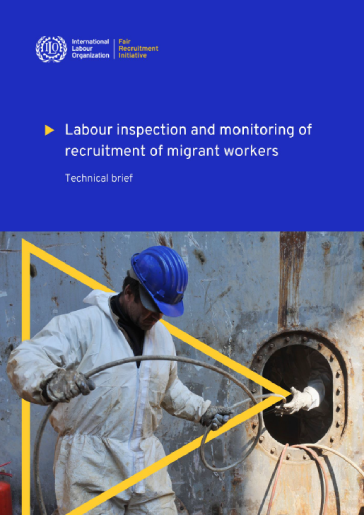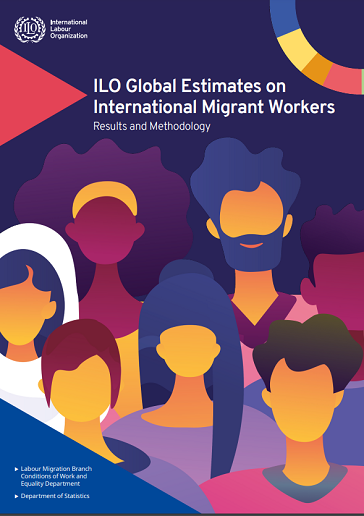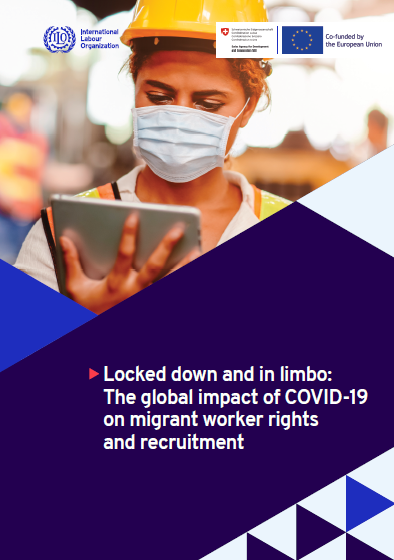Labour inspection and monitoring of recruitment of migrant workers
With a view towards contributing to achieving fair recruitment of migrant workers, this paper offers an overview of the main challenges pertaining to monitoring of recruitment of migrant workers by labour inspectorates, along with suggested ways forward and pointers for possible action by the ILO.
Labour inspection responsibilities extend to all stages of the recruitment process. The ILO General Principle for Fair Recruitment 5 states that “Regulation of employment and recruitment activities should be clear and transparent and effectively enforced. The role of the labour inspectorate and the use of standardized registration, licensing or certification systems should be highlighted.” Furthermore, Operational Guideline 5.1 outlining the responsibilities of governments indicates that: "Governments should work to ensure that there is an effective and sufficiently resourced labour inspectorate, and that it is empowered and trained to investigate and intervene at all stages of the recruitment process for all workers and all enterprises, and to monitor and evaluate the operations of all labour recruiters.” However, inspection of recruitment processes remains challenging – leaving many vulnerable workers (including migrant workers and those in the informal economy), exposed to exploitation and abuse.
In order to further expand knowledge and advocacy on the role of the labour inspectorate in ensuring fair recruitment, the ILO Labour Migration branch and the Labour Administration, Labour Inspection and Occupational Safety and Health branch commissioned a brief on fair recruitment and labour inspection, with the contribution of several projects (EU-REFRAME, SDC-FAIR II and SIDA-JLMP).
Type of document :
Country/Region :
Year of publication :
Theme : , ,
ILO Global estimates on international migrant workers: Results and methodology
This third edition of the ILO Global estimates on international migrant workers: Results and methodology presents the most recent estimates on the stock of international migrant workers, disaggregated by age, sex, country-income group and region, and the estimation methodology. The reference year is 2019. The report predates the onset of the COVID-19 crisis, which has affected the magnitude and characteristics of international labour migration. The estimates offer a benchmark against which the COVID-19 driven changes can be analysed in the future.
The periodic publication of this report provides information on recent trends on labour migration and therefore contributes to achieving the Sustainable Development Goals, as well as supporting policymaking at the country, regional and global levels.
Type of document :
Country/Region :
Year of publication :
Theme : ,
Locked down and in limbo: The global impact of COVID-19 on migrant worker rights and recruitment
The COVID-19 pandemic has had a devastating impact on migrant workers and their access to decent work. Beyond the immediate public health crisis, response measures including lockdowns and border closures had specific implications for the hiring and employment conditions of migrant workers. These measures have increased the vulnerability of migrant workers at the same time as the economic and social dependence on migrant workers who deliver essential services such as healthcare and sanitation has deepened.
To chart and understand this impact in detail, the ILO commissioned a series of rapid assessments in some of the world’s most significant corridors for low-wage migrant workers. Completed in the initial months of the crisis (early to mid-2020), these assessments gathered primary data in the form of interviews and surveys from the perspective of migrant workers and key stakeholders (including governments, civil society, the recruitment sector, employers’ organizations, unions and workers’ organizations) engaged in migration governance, migrant worker deployment and the protection of the rights of migrant workers.
These rapid assessments provide valuable snapshots of the immediate impact of the pandemic and early responses to the pandemic on migrant workers in various parts of the world. Common themes emerging from the research also illustrate the ways in which the pandemic exacerbated existing inequalities and vulnerabilities experienced by migrant workers globally. These themes demonstrate the clear linkages between the impact of the pandemic on migrant workers and the structural causes of the inequalities and vulnerabilities embedded in many current labour migration processes and practices.
Drawing on the rapid assessments, this report provides a global picture of the impact of the crisis on migrant workers, and provides valuable recommendations for ensuring protection of migrant workers’ rights.
Type of document :
Country/Region : , , , ,
Year of publication :
Theme : , , , ,
Subscribe to the Fair Recruitment Initiative Newsletter
Sign up to receive news delivered to your inbox.



